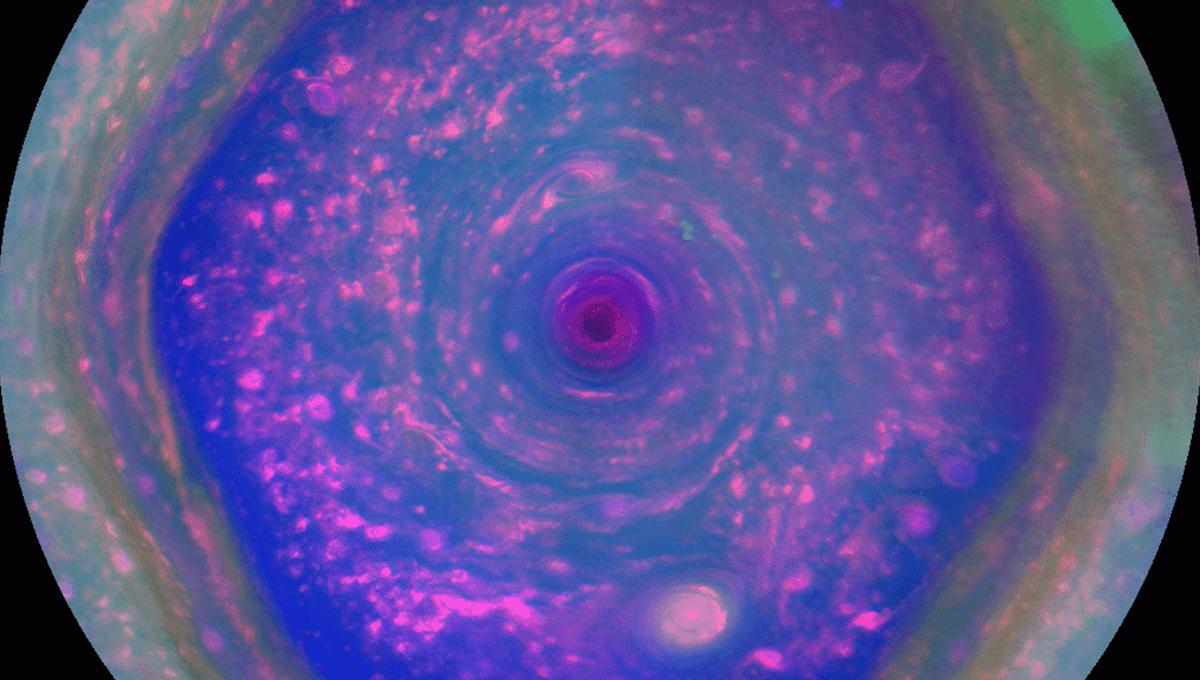Though our telescopes have become pretty darn good over the last century, there's nothing quite like seeing a planet from the point of view of an approaching spaceship.
In 1979, 1980, and 1981, humanity got our first brief glimpses of Saturn from close up, as Pioneer 11, Voyager 1, and Voyager 2 flew past the gas giant. As it flew past in 1979, Pioneer discovered the magnetosphere of Saturn, and two new moons, one of which it almost smacked into, according to NASA. While the glimpses of the planet were tantalizing, in 1997, NASA launched the Cassini–Huygens mission, sending a dedicated spacecraft to orbit the gas giant, studying it, its ring system, and its ridiculous number of moons. After gravity assists from Venus, Earth, and Jupiter, the spacecraft finally arrived at Saturn on July 1, 2004. Because of its route, the spacecraft was designed to withstand the heat of around 130°C (266°F) inside the orbit of Venus, to the -210°C (-346°F) environment around Saturn. The spacecraft's first mission was seven years long, seeing it perform many flybys of Saturn's moons, while it also observed the changing seasons on the gas giant and its largest moon, Titan. "Some of the most surprising scientific findings have come from encounters with Saturn’s fascinating, dynamic moons," NASA writes of the mission, which included dropping the European Space Agency's (ESA's) Huygens probe through Titan's atmosphere in 2005. "Cassini's observations of Saturn's largest moon, Titan, have given scientists a glimpse of what Earth might have been like before life evolved. They now believe Titan possesses many parallels to Earth, including lakes, rivers, channels, dunes, rain, clouds, mountains and possibly volcanoes." After it completed its original mission in 2008, Cassini's mission was extended, with the spacecraft still having plenty of fuel. It continued to orbit the planet, studying the structure of its rings, moons, and mapping its magnetosphere. In 2010, its mission was extended again, with the new Cassini Solstice Mission using the probe to observe long-term changes to the planet and its moons during Saturn's northern winter solstice. But after that mission, there was only time for one more extension, which NASA dubbed "The Grand Finale". In this phase of Cassini's life, the spacecraft performed 22 dives between Saturn's innermost ring and the tops of the planet's clouds over five months, getting closer observations than ever before. "At times, the spacecraft skirted the very inner edge of the rings; at other times, it skimmed the outer edges of the atmosphere," NASA explains. "While the mission team was confident the risks were well understood, there could still have surprises. It was the kind of bold adventure that could only be undertaken at the end of the mission." But after that, the probe was deliberately plunged into the gas giant, in order to protect its moons. "Having expended almost every bit of the rocket propellant it carried to Saturn, operators deliberately plunged Cassini into the planet to ensure Saturn's moons remain pristine for future exploration—in particular, the ice-covered, ocean-bearing moon Enceladus, but also Titan, with its intriguing pre-biotic chemistry," NASA added. "The plan for this phase of the mission was to expend all of the spacecraft's propellant while exploring Saturn, ending with a plunge into the planet's atmosphere." Saturn's rings, imaged shortly before Cassini's plunge. Image credit: NASA Before it took the plunge, Cassini sent back final images of Saturn's rings, a fuzzy final image of Titan, and Enceladus setting behind Saturn. Enceladus setting behind Saturn. Image credit: NASA The final image taken by the spacecraft before its descent was of the gas giant itself, capturing where it would eventually take its final plunge. "This monochrome view is the last image taken by the imaging cameras on NASA's Cassini spacecraft," NASA explains of the image. "It looks toward the planet's night side, lit by reflected light from the rings, and shows the location at which the spacecraft would enter the planet's atmosphere hours later." Cassini's final image of Saturn. Image credit: NASA The final dives into Saturn provided NASA with data on Saturn's magnetic fields and gravity, and also improved our knowledge of the amount of material that makes up its ring system. After 293 orbits, on September 15, 2017, the probe sent back its final science data, before going permanently into Saturn's atmosphere. We will likely never know what happened after that, but it is predicted that the spacecraft broke apart around a minute after that, ripped apart by the planet's atmosphere.






